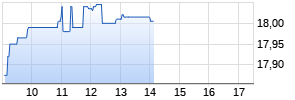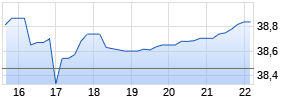
GSK ships 2017-18 seasonal influenza vaccines for US market
PR Newswire
PHILADELPHIA, July 14, 2017
PHILADELPHIA, July 14, 2017 /PRNewswire/ -- GSK (LSE/NYSE: GSK) today announced it has begun shipping quadrivalent vaccine doses to US healthcare providers, following licensing and lot-release approval from the US Food and Drug Administration's (FDA) Center for Biologics Evaluation and Research.
The US Centers for Disease Control and Prevention (CDC) recommends flu vaccination as the single best measure for flu prevention. The CDC has a routine recommendation for people over the age of 6 months to get a flu vaccination each year as the first and most important step in protecting against this disease.1,2
In November 2016, GSK received approval from the US FDA expanding the indication for FLULAVAL® QUADRIVALENT to include use in children aged 6 months and older. FLUARIX® QUADRIVALENT is indicated for use in persons aged three years and older.
"Since 2013, GSK has lead the industry by offering the broad protection of a quadrivalent (four-strain) flu vaccine to the US market," said Patrick Desbiens, Senior Vice President, US Vaccines. "The expanded indication for FLULAVAL® QUADRIVALENT in the US builds upon GSK's commitment to being a reliable partner to our customers and the patients they protect against the flu by enabling providers to use the same dose to vaccinate all recommended patients aged 6 months and older."
Three different options of the four-strain vaccines will be available to customers. FLULAVAL® QUADRIVALENT comes in a 5mL, multidose vial containing 10 doses (0.5mL each) and a 0.5mL, single-dose, prefilled syringe, while FLUARIX® QUADRIVALENT comes in a 0.5mL, single-dose, prefilled syringe.
GSK expects to supply up to 40 million doses across both vaccines for the US market in the 2017-18 season. GSK is committed to broad protection against influenza so one hundred percent of GSK supply is quadrivalent.
Quadrivalent vaccines are designed to help protect against two main types of flu viruses, A and B, which spread between people and can cause mild to severe illness. Most flu activity in the US occurs from October through May, and it usually peaks between December and February. According to the CDC, flu-related hospitalizations have ranged from 140,000 to 710,000 and flu-related deaths from 12,000 to 56,000 annually since 2010.3,4,5
ARIVA.DE Börsen-Geflüster
Kurse
 |
 |
According to the CDC, the flu is more dangerous than the common cold for children. Severe flu complications are most common in children under the age of 2 years. Each year, millions of children get sick with seasonal influenza and some of those illnesses result in death. The CDC estimates that flu-related hospitalizations among children under the age of 5 have ranged from 7,000 to 26,000 since 2010 and flu-related deaths reported to CDC during regular flu seasons from 37 to 171 since the 2004-2005 flu season.6
For this year's flu season, the World Health Organization (WHO) and FDA's Vaccines and Related Blood Products Advisory Committee recommended including the A/Michigan/45/2015 (H1N1) pdm09-like virus, A/Hong Kong/4801/2014 (H3N2)-like virus and B/Brisbane/60/2008-like (B/Victoria lineage) virus, with the addition of B/Phuket/3073/2013-like virus (B/Yamagata lineage) for the quadrivalent vaccine.7,8
For more general information about the flu, visit ChooseMoreChooseFour.com.
About GSK flu vaccine manufacturing
FLUARIX® QUADRIVALENT is manufactured in Dresden, Germany. FLULAVAL® QUADRIVALENT is manufactured in Ste-Foy, Quebec, Canada.
The following Important Safety Information is based on the Highlights section of the Prescribing Information for FLULAVAL® QUADRIVALENT (Influenza Vaccine) and FLUARIX® QUADRIVALENT (Influenza Vaccine). Please consult the full Prescribing Information for all the labeled safety information for FLULAVAL® QUADRIVALENT and FLUARIX® QUADRIVALENT.
Prescribing Indication(s) for FLULAVAL® QUADRIVALENT (Influenza Vaccine) and FLUARIX® QUADRIVALENT (Influenza Vaccine)
Indication for FLULAVAL® QUADRIVALENT
FLULAVAL® QUADRIVALENT is a vaccine indicated for active immunization for the prevention of disease caused by influenza A subtype viruses and type B viruses contained in the vaccine. FLULAVAL® QUADRIVALENT is approved for use in persons aged 6 months and older.
Indication for FLUARIX® QUADRIVALENT
FLUARIX® QUADRIVALENT is a vaccine indicated for active immunization for the prevention of disease caused by influenza A subtype viruses and type B viruses contained in the vaccine. FLUARIX® QUADRIVALENT is approved for use in persons aged 3 years and older.
Combined Important Safety Information for FLULAVAL® QUADRIVALENT (Influenza Vaccine) and FLUARIX® QUADRIVALENT (Influenza Vaccine)
- Do not administer FLULAVAL® QUADRIVALENT or FLUARIX® QUADRIVALENT to anyone with known severe allergic reactions (anaphylaxis) to any component of the vaccine, including egg protein, or a life‐threatening reaction to previous administration of any influenza vaccine
- If Guillain-Barré syndrome has occurred within 6 weeks of receipt of a prior influenza vaccine, the decision to give FLULAVAL® QUADRIVALENT or FLUARIX® QUADRIVALENT should be based on careful consideration of the potential benefits and risks
- Syncope (fainting) can occur in association with administration of injectable vaccines. Procedures should be in place to avoid falling injury and to restore cerebral perfusion following syncope
- If FLULAVAL® QUADRIVALENT or FLUARIX® QUADRIVALENT is administered to immunosuppressed persons, including individuals receiving immunosuppressive therapy, the immune response may be lower than in immunocompetent persons
- In clinical trials with FLULAVAL® QUADRIVALENT in adults, the most common solicited local adverse reaction was pain and the most common solicited systemic adverse reactions were muscle aches, headache, fatigue, and arthralgia. In children aged 6 through 35 months of age, the most common local adverse reaction was pain and the most common solicited systemic adverse reactions were irritability, drowsiness, and loss of appetite. In children 3 through 17 years of age, the most common solicited local adverse reaction was pain. In children 3 through 4 years of age, the most common solicited systemic adverse reactions were irritability, drowsiness, and loss of appetite. In children 5 through 17 years of age, the most common solicited systemic adverse reactions were muscle aches, fatigue, headache, arthralgia, and gastrointestinal symptoms. (See Adverse Reactions section of the Prescribing Information for FLULAVAL® QUADRIVALENT for other potential adverse reactions and events.)
- In clinical trials with FLUARIX® QUADRIVALENT, the most common injection site adverse reaction in adults was pain. The most common systemic adverse reactions in adults were muscle aches, headache, and fatigue. In children 3 through 17 years of age, injection site adverse reactions were pain, redness, and swelling. In children 3 through 5 years of age, the most common systemic adverse reactions were drowsiness, irritability, and loss of appetite. In children 6 through 17 years of age, the most common systemic adverse reactions were fatigue, muscle aches, headache, arthralgia, and gastrointestinal symptoms. (See Adverse Reactions section of the Prescribing Information for FLUARIX® QUADRIVALENT for other potential adverse reactions and events.)
- Vaccination with FLULAVAL® QUADRIVALENT or FLUARIX® QUADRIVALENT may not result in protection in all vaccine recipients
GSK – one of the world's leading research-based pharmaceutical and healthcare companies – is committed to improving the quality of human life by enabling people to do more, feel better and live longer. For further information please visit www.gsk.com.
| GSK enquiries: | | | | |
| | | | | |
| US Media enquiries: | Robin Gaitens | +1 919 483 2678 | (North Carolina) | |
| | Gwynne Oosterbaan | +1 215 751 7468 | (Philadelphia) | |
| | | | | |
| Analyst/Investor enquiries: | Sarah Elton-Farr | +44 (0) 20 8047 5194 | (London) | |
| | Tom Curry | + 1 215 751 5419 | (Philadelphia) | |
| | Gary Davies | +44 (0) 20 8047 5503 | (London) | |
| | James Dodwell | +44 (0) 20 8047 2406 | (London) | |
| | Jeff McLaughlin | +1 215 751 7002 | (Philadelphia) | |
|
Cautionary statement regarding forward-looking statements
| ||||
| Registered in England & Wales: No. 3888792 | | |||
| | | |||
| Registered Office: 980 Great West Road Brentford, Middlesex TW8 9GS | | |||
| | | | | |
1 The US Centers for Disease Control and Prevention (CDC): Preventing the Flu: Good Health Habits Can Help Stop Germs. Available at: http://www.cdc.gov/flu/protect/habits.htm. Accessed June 2017.
2 The US Centers for Disease Control and Prevention (CDC): Vaccination: Who Should Do It, Who Should Not and Who Should Take Precautions. Available at: http://www.cdc.gov/flu/protect/whoshouldvax.htm#annual-vaccination. Accessed June 2017.
3 The US Centers for Disease Control and Prevention (CDC): Types of Influenza Viruses. Available at: https://www.cdc.gov/flu/about/viruses/types.htm. Accessed June 13, 2017.
4 The US Centers for Disease Control and Prevention (CDC): The Flu Season. Available at: https://www.cdc.gov/flu/about/season/flu-season.htm. Accessed July 5, 2017.
5 The US Centers for Disease Control and Prevention (CDC): Estimated Influenza Illnesses, Medical Visits, Hospitalizations, and Deaths Averted by Vaccination in the United States. Available at: https://www.cdc.gov/flu/about/disease/2015-16.htm. Accessed June 2017.
6 The US Centers for Disease Control and Prevention (CDC): Children, the Flu, and the Flu Vaccine. Available at: http://www.cdc.gov/flu/protect/children.htm. Accessed June 13, 2017.
7 World Health Organization (WHO): Recommended Composition of Influenza Virus Vaccines for use in the 2017-2018 northern hemisphere influenza season. Available at: http://www.who.int/influenza/vaccines/virus/recommendations/201703_recommendation.pdf?ua=1. Accessed June 13, 2017.
8 U.S. Food and Drug Administration (FDA): Influenza Virus Vaccine 2017-2018 Strain Selection. Available at: https://www.fda.gov/downloads/AdvisoryCommittees/CommitteesMeetingMaterials/BloodVaccinesandOtherBiologics/VaccinesandRelatedBiologicalProductsAdvisoryCommittee/UCM547273.pdf. Accessed June 13, 2017.
View original content:http://www.prnewswire.com/news-releases/gsk-ships-2017-18-seasonal-influenza-vaccines-for-us-market-300488686.html
SOURCE GSK

Mehr Nachrichten zur GSK Glaxo Smith Kline Plc. Aktie kostenlos abonnieren
(Mit der Bestellung akzeptierst du die Datenschutzhinweise)

Hinweis: ARIVA.DE veröffentlicht in dieser Rubrik Analysen, Kolumnen und Nachrichten aus verschiedenen Quellen. Die ARIVA.DE AG ist nicht verantwortlich für Inhalte, die erkennbar von Dritten in den „News“-Bereich dieser Webseite eingestellt worden sind, und macht sich diese nicht zu Eigen. Diese Inhalte sind insbesondere durch eine entsprechende „von“-Kennzeichnung unterhalb der Artikelüberschrift und/oder durch den Link „Um den vollständigen Artikel zu lesen, klicken Sie bitte hier.“ erkennbar; verantwortlich für diese Inhalte ist allein der genannte Dritte.



